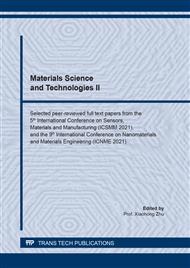p.85
p.93
p.99
p.107
p.113
p.119
p.127
p.135
p.141
Fabrication and Mechanical Evaluation of Geopolymeric Mortars Derived from Inorganic Industrial Waste from Peruvian Formal Mining
Abstract:
Geopolymeric mortars derived from residues of the Peruvian formal mining industry were manufactured and mechanically evaluated under normal conditions of temperature and atmosphere. The mechanical results found in geopolymeric mortars were compared with those found in conventional Portland cement mortars (control). The values of maximum uniaxial compressive strengths for geopolymeric mortars were between 15.5 and 31.5 MPa, finding the best results when considering a ratio binder:fine sand of 1:2, hardener solution molarity of 20M and a ratio hardener solution:binder of 0.6. The microstructure found for both types of mortars studied (control and geopolymeric) consisted of an interconnected continuous phase of binder (cement or geopolymerized mining tailings) and another discontinuous one of fine sand particles, located within the binder phase.
Info:
Periodical:
Pages:
113-118
Citation:
Online since:
April 2022
Keywords:
Price:
Сopyright:
© 2022 Trans Tech Publications Ltd. All Rights Reserved
Share:
Citation:


